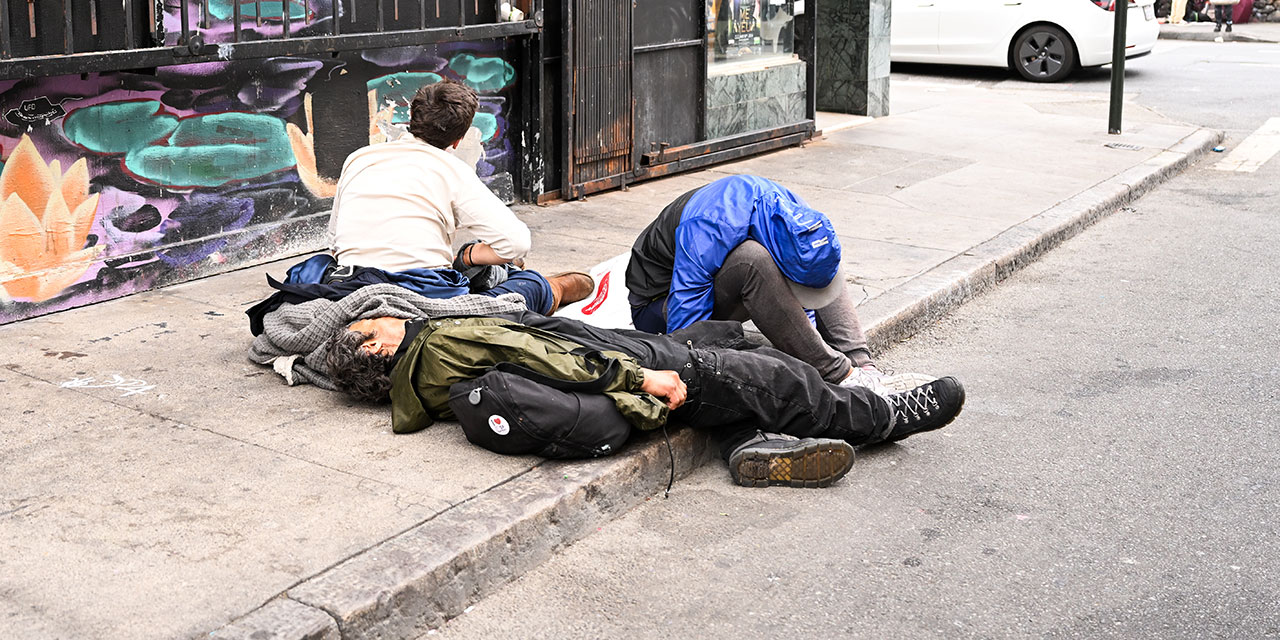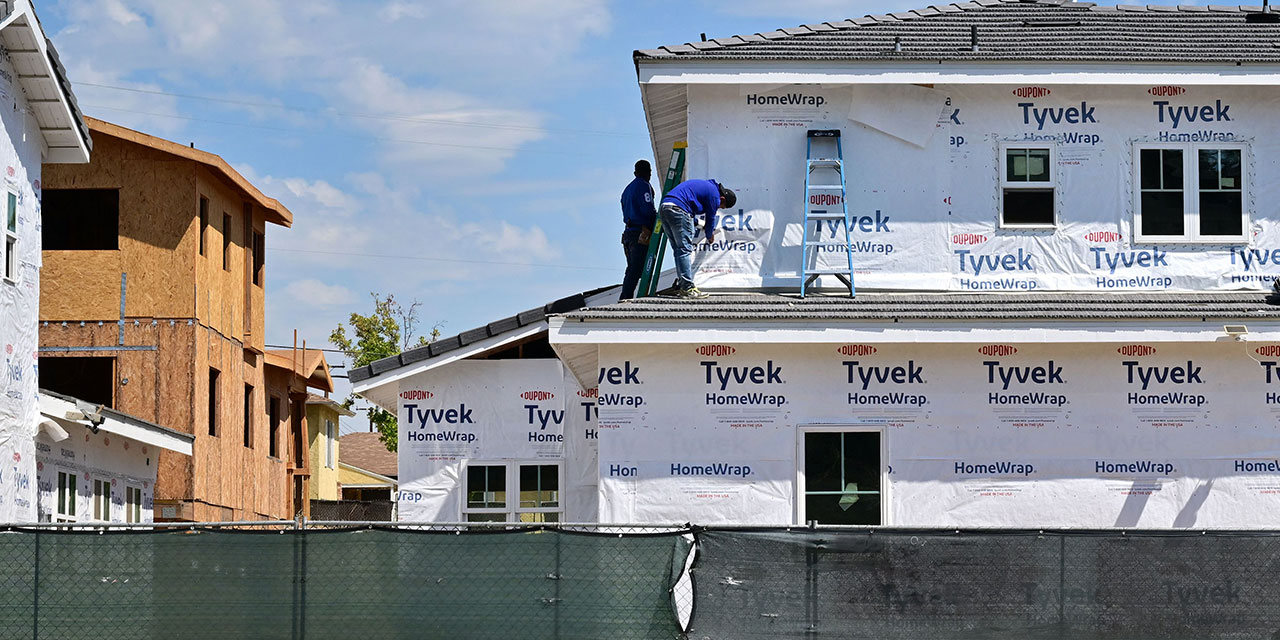In July 2022, responding to reports that Texas governor Greg Abbott was providing border-crossers with free transportation to New York City, New York mayor Eric Adams was sanguine. “They ended up here because they didn’t get the support there,” the mayor said. The “support” he referred to was the city’s panoply of social services, offered to all comers—including, under its decades-old “right to shelter” commitment, free housing.
Adams was clear: the city would ramp up these services. The goal was “to make sure we meet the moment,” he promised. “We are responsive, and we responded. And when you look at three thousand people hitting our shelter system . . . our administration is saying to them, ‘We’ve got you. This is who we are as New Yorkers. We got you. We’re going to provide the services you need and many complex services.’” In the two years since, the number of migrants in city shelters has reached 65,000, with more than 1,000 new arrivals each week. For context, the city’s homeless-shelter population was 45,000 as of early 2022; that number has nearly tripled, mostly because of migrants.
Finally, a reason to check your email.
Sign up for our free newsletter today.
City hall calls this influx a humanitarian crisis and claims to be acting heroically to address it. For the Adams administration, though, the situation also presents an opportunity: the surge in migrants has led to the largest issuance of no-bid emergency contracts in New York City’s modern history, amounting to billions of taxpayer dollars awarded to noncompetitive contractors—many of them politically connected to the mayor. New York not only has failed to manage its record migrant spending effectively; without imposing any limits on that spending, it also has struggled to monitor or achieve its own stated goals, such as quickly moving people out of shelters or even distributing money via debit cards to shelter residents.
Any successful urban government must provide basic public services to all residents and visitors, along with limited social services to its needy residents. New York City’s insistence that it can indefinitely spend vast sums to welcome the world imperils the city’s ability to deliver the basics to its own constituents.
The amount of money Gotham is spending to welcome, shelter, feed, safeguard, and educate migrants is staggering. The numbers city hall puts out change constantly, depending on whether the mayor’s political goal at a given time is to raise public alarm (hoping to shake loose more funds from Washington) or to minimize New Yorkers’ concerns (hoping to boost his record-low approval rating). Reliable numbers, though, are available from the state comptroller’s office. It estimates that over the two fiscal years of 2023 and 2024, New York City has spent $4.2 billion on the migrant influx. The city projected spending an additional $1 billion through the end of fiscal year 2024 and $4.7 billion in total during fiscal year 2025, with spending gradually declining in future years. The biggest portion is going to shelters: across three government entities, New York will have spent $2.3 billion on shelters in 2024, or 61 percent of that year’s $3.8 billion in projected spending. Other migrant costs include education, health care, and legal services.
Even for a spendthrift government with a $114.1 billion budget ($89.6 billion from city taxpayers and the rest from state and federal grants), these sudden, self-inflicted bills are shocking. Consider the $4.7 billion projection for migrant costs in fiscal year 2025. This amount rivals or exceeds what the city will spend on three of its four uniformed basic public services: including pension and health-care benefits for current workers as well as retirees, New York will spend $2.6 billion on its corrections department, $3.1 billion on sanitation, and $5.6 billion on the fire department. With its migrant expenditures, it’s as if New York has launched an entirely new—and expensive—uniformed service.
And there’s no guarantee that migrant spending will decline gradually over the next few years, as the city predicts. Most migrants, though the city calls them “asylum seekers,” are ineligible for asylum and will probably not get permanent authorization to work legally in America. Even if they do work, whether legally or illegally, they’re unlikely to provide substantial tax revenues to New York City, whose tax system is highly progressive and depends on wealthier earners.
Local governments don’t generally commit themselves to open-ended social services for unlimited populations—with good reason. Cities’ taxing power is limited. New York City can raise only property taxes on its own, relying on state permission to increase income and sales taxes, and state law and its own charter prevent it from running annual deficits. In a future recession–induced budget crisis, then, city residents may find themselves facing deep cuts to public services, such as fire and sanitation, to pay migrant costs. (In fact, that service reduction has already started, with the mayor cutting library hours.)
It’s not just the level of migrant spending that is concerning, but how the Adams administration is doing it: through its contracts with for-profit and nonprofit corporations. New York City has so far awarded at least $7.6 billion worth of migrant contracts, according to the city comptroller, through 360 or so separate agreements.
Many of these are no-bid emergency deals. Cities do confront real emergencies—9/11, Covid-19, Hurricane Sandy—when they may need to waive the normal rules for awarding contracts to nongovernment firms, a process that typically takes months (or longer) as officials prepare the scope of work needed and procure multiple competitive bids. As New York’s comptroller’s office, independent of the mayor, puts it, “when circumstances arise that threaten life, safety [or] property,” the city charter “enable[s] agencies to accelerate . . . procurement.” This includes limiting or even eliminating competition among bidders and opportunities for public comment, such as solicitation of input from potential vendors and independent experts on what an efficient contract might look like.
But an emergency, by definition, should be unforeseen and short. A heart attack is an emergency; a chronic heart condition requiring a specific diet and more exercise to control it is not. Adams declared the first migrant-crisis “emergency” in October 2022, and he has regularly extended it since. These extensions persist, despite the foreseeable weekly inflow of new migrants, thanks to the mayor’s continued embrace of the city’s supposed “right to shelter.” Under Mayor Adams, “emergency” has become the day-to-day situation. Of the migrant deals that New York has awarded, 186 of them—worth $2.7 billion—came under emergency procurement rules.
This permanent emergency has set the Adams administration on pace to break records for such procurement. According to my analysis of publicly available city data, during the entire Bloomberg administration—12 years, from 2002 through 2013—the city signed just $1.6 billion in 738 emergency contracts, for all purposes. In the eight de Blasio years that followed (2014–21), the city awarded $10.9 billion via 1,796 emergency contracts, with most of that—$9.5 billion across 1,253 contracts—coming after March 2020, as the mayor dealt with disruptions from the pandemic. During the first two years and four and a half months of the Adams administration, the city has agreed to $4.6 billion in emergency contracts, for all purposes, across 347 separate deals. At this rate, if he secures a second four-year term, Adams will outdo the de Blasio tally.

Why does this matter? For starters, emergency contracts stifle competition, costing taxpayers money. Consider the Housing Preservation and Development (HPD) deal with the Hotel Association of New York City (HANYC) in September 2022. The contract, originally for $237.3 million but since boosted to $987.3 million, covers the use of up to 14,000 hotel rooms for migrants through August 2024 at an average rate of $159 across 199 hotels, according to the city comptroller. Other daily costs—mostly food and security—granted through separate contracts to separate vendors bring the total daily rate to $328. Instead of negotiating a single deal with HANYC—whose political action committee, it’s worth noting, has donated to both Mayor Adams and the city council speaker—why didn’t the city seek competitive bids from hotels? This could have included offers with bundled costs for security and food.
It still might make sense for New York to award all hotel-room contracts under a unified deal with HANYC, if it were seeking consistency, above other considerations. Yet New York has also entered separate migrant deals with hotels through different government entities. For example, in May 2023, the city inked a three-year migrant-shelter contract with midtown’s Roosevelt Hotel via its Health + Hospitals corporation, not HPD. This contract rents 1,025 rooms to the city at $205 per night per room, totaling $225 million. Why is Health + Hospitals managing the Roosevelt Hotel contract and some smaller hotel deals while HPD handles the larger ones? Additionally, why did HPD take on a $53 million no-bid contract with Mobility Capital Finance (MoCaFi)—whose CEO is also a mayoral donor—to provide debit cards to migrants? Debit cards are a social service, not a housing service. The city’s dedicated social-services agency, the Human Resources Administration, should manage such contracts. And why was there an emergency push to finalize the MoCaFi deal at the end of 2023? By June 2024, halfway through its one-year contract, MoCaFi had distributed less than $600,000 of the authorized funds, a mere fraction of the total—suggesting that either it or the city wasn’t prepared to deliver the “emergency” service effectively.
Emergency contracts are temptations for corruption. As Molly Wasow Park, the city’s social-services commissioner, informed the city council last fall, such contracts “are reviewed by at least three raters who assess proposals on multiple metrics including experience, organizational capacity, and approach.” Multi-hundred-million-dollar no-bid or limited-bid contracts are left up to just three people—all ultimately reporting to the mayor—who aren’t required to follow any quantitative guidance on the agreements.
These contracts also involve subvendors, adding to the corruption risk. MoCaFi, for example, has proposed to spend $350,000 on a subvendor, a security firm working out of a private home in the Bronx, for “staffing services.” How and why did MoCaFi choose this subvendor? Was it directed to do so by the city or a city official? Did the subvendor offer the best service at the best cost? There’s no way to know.
Using emergency contracts compounds another problem with migrant services: it’s impossible for the public, through the press, to learn whether the taxpayer-promised services are competently or fully delivered.
When New York contracts to provide a true public service—say, filling potholes or building a public restroom—the public may not be able to tell whether the city got the best price. But the public can see whether the work was done and performed to a basic standard. Did the new restroom open on time—or ever? Did it work—or fall apart in six months?
Much activity under the migrant contracts, by contrast, happens behind closed doors, and the people receiving the services aren’t in much position to complain publicly if they’re not delivered. The public has no visibility inside the Roosevelt Hotel; it has no idea, for instance, whether it is paying for 1,025 rooms with, say, only 500 of them filled by migrants. This worry isn’t idle: the mayor’s son apparently stayed for free in a hotel contracted as a shelter for people newly out of jail.
The public likewise has no way of knowing whether the city is fulfilling its new goal, effective in early 2024, of evicting migrants after 30- and 60-day stays (for single adults and families, respectively). When I tried to use the Freedom of Information Act to force the city to turn over such data—that is, by hotel-room number, how many people are staying in each room, and how long each adult or family has been there—multiple city agencies, from Health + Hospitals to the Department of Social Services to the Department of Homeless Services, claimed that they don’t maintain the information. Other agencies, after several months, haven’t responded to the request. This information should be at any competent hotel manager’s fingertips instantly.
It’s not just the big contracts that demand oversight. Lost in the attention to big-ticket deals are much smaller emergency contracts that get minimal scrutiny: a $6.8 million deal to Catholic Charities for an “asylum seeker navigation center”; $5.4 million for “family services” to a group called Project Hospitality; $13 million for the same end to an outfit called Vocational Instruction Project. From laundry services to providing school supplies, dozens of such small-ish migrant contracts abound. Are the contractors delivering? Who knows?
The obvious solution to this mounting disaster is for New York to stop trying to provide shelter services to an open-ended number of migrants. Short of that, other branches of government could do more to constrain the mayor. The comptroller, for example, can decline to register emergency contracts, as he did last year in rejecting a new no-bid deal with DocGo, a firm that had already generated negative headlines for delivering subpar-quality food to migrants and hiring unqualified security guards for migrant hotels. Yes, the mayor can and did override the comptroller. But at least the episode raised a red flag that grabbed public attention. The city council, too, can focus attention on emergency-contracting abuses. The council held two hearings in 2023 on the issue, and it could refuse to agree to a new fiscal-year budget absent real changes to the contracting process.
Meantime, through its permanent migrant emergency, New York is building up to a real emergency. In early 2024, the city signed 12 new emergency contracts worth $100 million, more than half for migrant services. New York taxpayers are sending a lot of money out the door, in other words, with no way to ensure that they’re getting value for their generosity. In a future recession, as they suffer cuts to basic services, New Yorkers may wish they had that money back.
Top Photo: Under Mayor Eric Adams’s administration, the city has so far awarded $7.6 billion in migrant contracts. (Tribune Content Agency LLC/Alamy Stock Photo)





